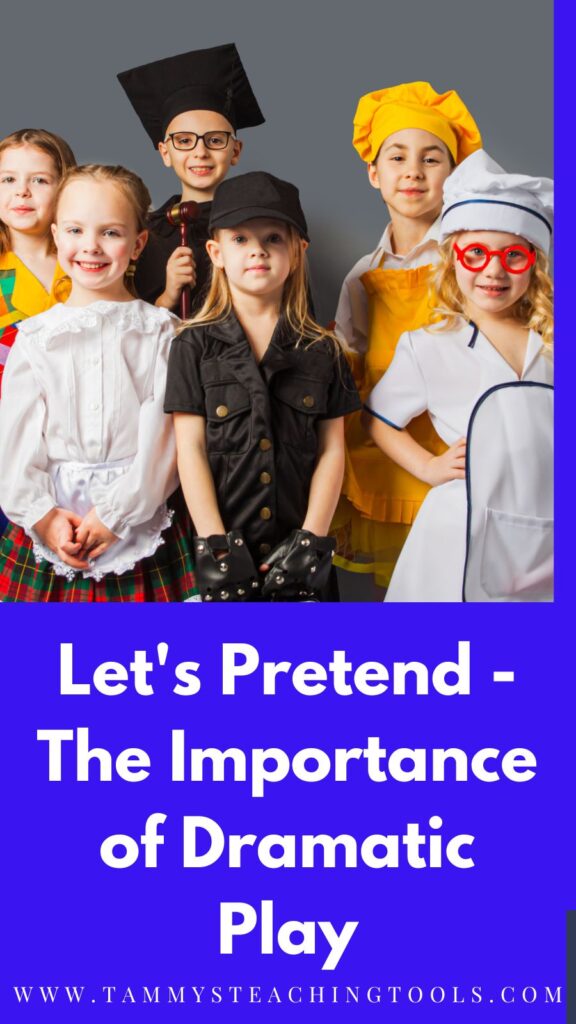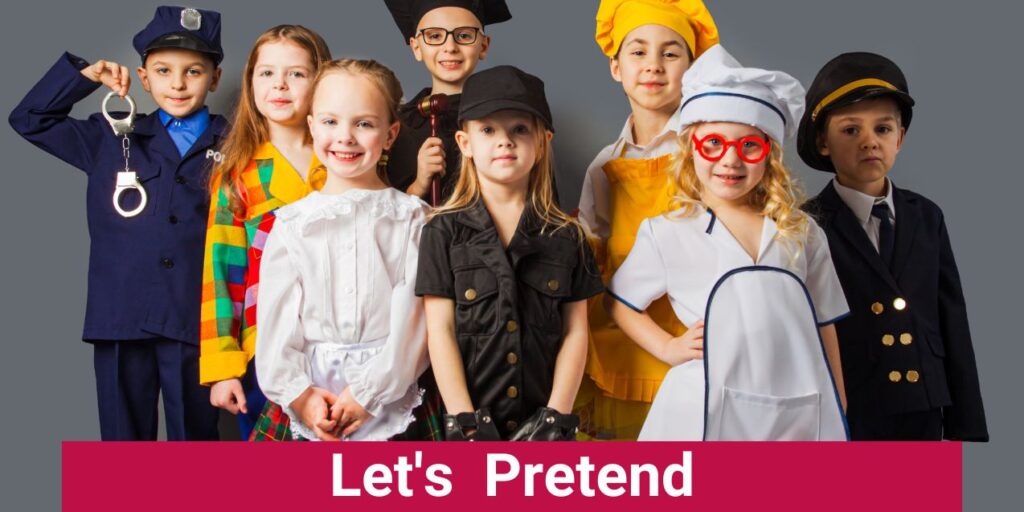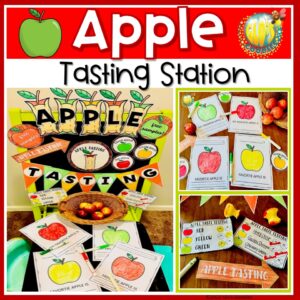Let’s Pretend, Dramatic Play in Early Childhood Education
As a kid, did you ever play dress-up with your friends or have a tea party with your stuffed animals? These playful activities were more than just fun and games. They were actually helping you develop important life skills such as communication, collaboration, and problem-solving.
Dramatic play, or pretend play, is vital to early childhood education. Let’s explore why it’s so important and how you can encourage it. At the end, you will find some great activities and a freebie that you can use today. So, let’s get dramatic.

Dramatic Play: Why is it Important?
- Dramatic play promotes Imagination: Dramatic play encourages children to think creatively and imagine different scenarios. It allows children to explore new worlds and use their imagination to create new experiences, building their confidence and self-esteem. Children can learn about different cultures, time periods, and social interactions by pretending to be different characters, allowing them to practice empathy and develop social-emotional skills.
- It enhances language development: Dramatic play promotes language development as children are encouraged to talk and interact with others while playing. It helps children learn new vocabulary words and practice grammatical structures. Children also learn to use language as a tool to communicate their needs and ideas effectively while engaging in group play.
- Playing builds problem-solving skills: Dramatic play provides an environment where children can practice problem-solving skills. Playing different roles exposes children to new situations and challenges that require them to solve problems and work collaboratively with others. This helps develop critical thinking skills that they can utilize in the future.
- It increases social awareness: Dramatic play promotes social awareness by allowing children to understand social roles and expectations. Through this kind of play, children learn the importance of social interactions and how to control their emotions in a social setting. It also provides opportunities for children to understand different forms of communication, such as verbal and non-verbal cues, body language, and tone of voice.
- It encourages physical development: Dramatic play also encourages physical development in young children. It provides opportunities for children to practice different physical skills such as balance, coordination, and motor skills. Playing different roles encourages children to use their bodies in different ways, promoting physical activity and healthy habits.

Using Dramatic Play in Your Classroom
Choosing a Theme:
Selecting a theme for your dramatic play center is the first step in creating a captivating experience for your students. Consider their interests, cultural diversity, and the subjects you wish to explore. Whether it’s a bustling kitchen, a cozy veterinarian clinic, or a bustling post office, choose a theme that sparks curiosity and provides opportunities for role-playing and storytelling.
Creating the Environment:
Now, let’s transform a corner of your classroom into a captivating world that will transport your students to new adventures.
- Furniture and Props: Invest in child-sized furniture like tables, chairs, and shelves. Add props and materials that align with your chosen theme, such as toy kitchen utensils, doctor kits, or costumes. Thrift stores and yard sales can be treasure troves for finding affordable items to enhance your dramatic play center.
- Decorations and Backdrops: Set the stage with colorful decorations and backdrops. Create a scenic mural or hang fabric to define different areas within the play center. Use wallpapers, drawings, or printed images to create immersive environments that reflect your chosen theme.
- Labels and Signage: Incorporate labels and signage to make your play center more organized and functional. Label shelves and storage containers with words and pictures to help children find and return items independently. Print signs like “Welcome to Chef’s Corner” or “Dr. Smith’s Animal Hospital” to add an extra touch of authenticity.
Supporting Materials:
Dramatic play centers can be enhanced by providing additional materials that enrich the learning experience.
- Books: Include a collection of storybooks related to the theme of your play center. These books can serve as inspiration for children’s storytelling, introduce new vocabulary, and deepen their understanding of the roles they are playing.
- Printables: Utilize printables like play money, menus, appointment cards, and shopping lists. These resources promote literacy and numeracy skills and encourage children to engage in meaningful play scenarios.
 Check out these wonderful resources from Glo’s Goodies. This talented teacher-author and mom has created dramatic play resources with all you need to assemble fast and fun play areas. Grab the freebie here, and be sure to follow her for more ideas.
Check out these wonderful resources from Glo’s Goodies. This talented teacher-author and mom has created dramatic play resources with all you need to assemble fast and fun play areas. Grab the freebie here, and be sure to follow her for more ideas.
Back to School Dramatic Play Bundle
Conclusion:
Dramatic play centers are captivating worlds where children’s imaginations run wild, fostering creativity, social skills, and cognitive development. By designing engaging environments, we can unleash the full potential of early childhood education. So, dear educators, let us embrace the magic of dramatic play and create unforgettable learning experiences that will shape the future of our little ones.
Let’s Pretend!

Other posts you may like:
How to Turn Any Lesson into an Exciting Game




